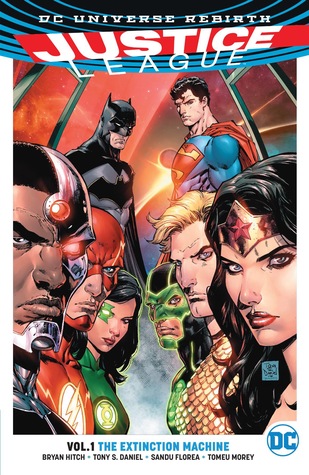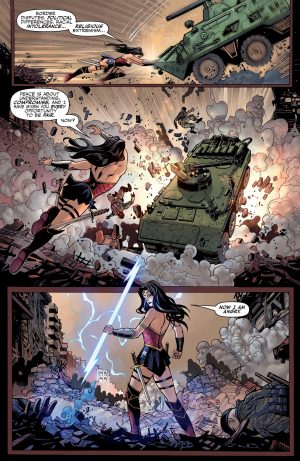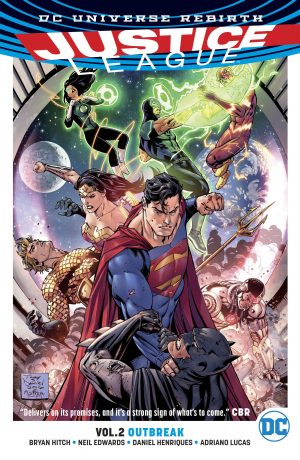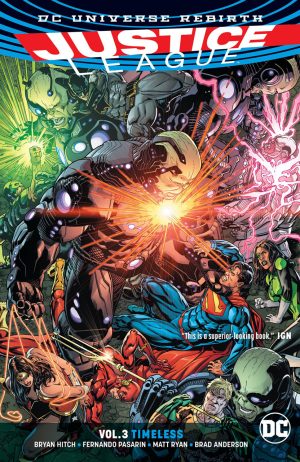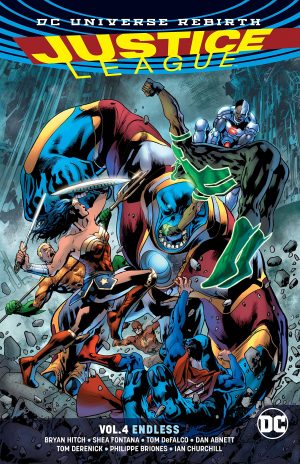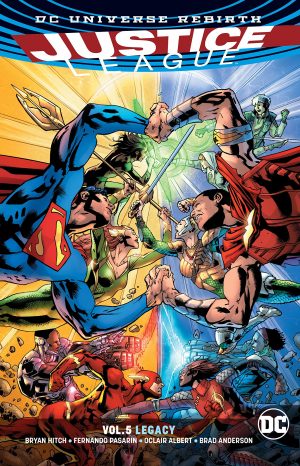Review by Ian Keogh
Around the turn of the millennium Bryan Hitch was the sporadic artist on a disappointing run of Justice League material, and clearly has his own ideas about what makes the most powerful superheroes on Earth work together. They need a credible threat equal to or beyond their capabilities, and personal interaction that defines their personalities, albeit personalities that have changed considerably since the Justice League’s 1960 introduction. The threat Hitch comes up with is a series of natural disasters across the globe on a massive scale. Superheroes against the immensity of nature is a good idea, rendering them powerless other than as sticking plasters, removing as many people as possible from affected areas.
Hitch drawing his own introductory chapter results in a jury’s out ambivalence, but there’s nothing of that about Tony S. Daniel’s approach. It’s dynamic and fragmented, spotlighting individual team members as per Hitch’s script, and providing each with the power, subtlety or athleticism they require. He has a wonderful instinct for an image that grabs the attention, like Hitch at his best does, and repeats this throughout the book. He’s particularly impressive in detailing how fast the Flash is. Jesús Merino steps in for the middle chapter and doesn’t match Daniel’s dynamism, but is impressively detailed.
For all that, The Extinction Machines doesn’t hit the spot. The introduction of a second massive threat is too similar to Hitch’s prologue chapter, and rather than initiating the necessary desperation it reduces the Justice League to fleas on the back of a dog. The threat they face, the Kindred, speaks to them in enigmatic fashion without ever providing explanations on a comprehensible level. It’s clear from early on that the Kindred’s intentions aren’t malign despite the results of their actions, and the whole foundation of the plot falls on this lack of communication. It’s simply not credible given the abilities of all parties. More on the trainspotter scale, it’s rarely satisfying when a previously unknown immense Earth-based force is introduced to a long-standing superhero title during the course of which the planet has faced thousands of threats. This isn’t one of those occasions. Hitch has some interesting ideas, not least some Justice League members catching on quicker than others, but lacks the writing skill to pull matters together cohesively.
The graphic novel is fleshed out by fifteen variant covers for the five comics collected here, a few pages of Daniel’s art before Sandu Florea applied the inks, and the character designs for the primary Justice League members. Hitch’s rebooted Justice League continues with Outbreak.
